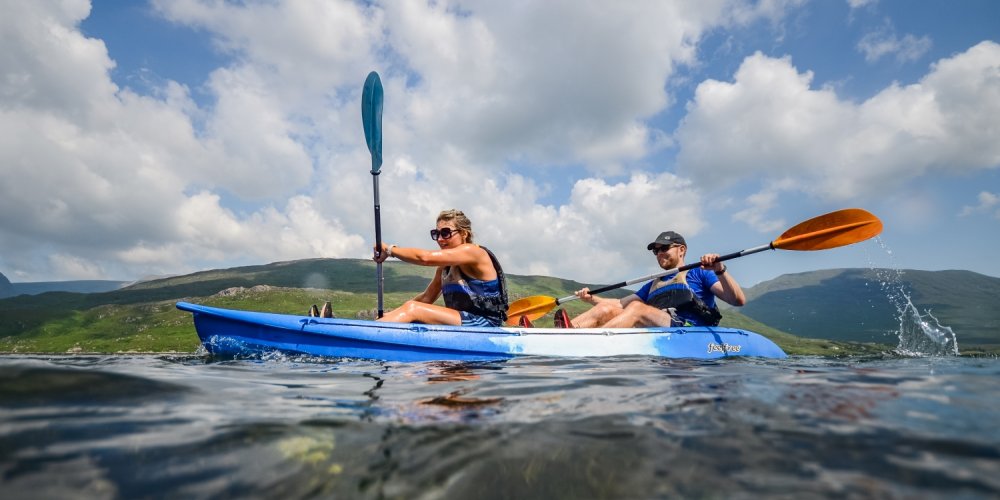There’s no need to fear the kayak! While conditions can vary from flat and calm to choppy and windy, this section of Gaelforce West is the shortest part of the race and one you can definitely manage. Here are our top tips for beginners and a few more for experienced kayakers to help improve your time.
TOP 5 TIPS FOR BEGINNERS
We use 2 person sit-on-top kayaks which do as they say on the tin - you sit on top of the boat rather than having your legs enclosed in a cockpit. You won’t be on your own, which is reassuring if you are a bit wary. They are also very stable and do not capsize easily. All good news so far for the beginner kayaker!
1. Get in a practice session at your local kayak club or adventure centre if you have never been in a kayak before, just to settle the nerves and give you a feel for it.
2. Take your time getting in and out of the kayak – there can be a tendency to rush at this point, but it is the time when you are most likely to end up in the water so slow down and stay dry.
3. Get comfortable before you go anywhere – legs should be bent at the knees, back nice and upright and hands placed wider than the shoulders on the paddle.
4. Take your time, especially if there is a wind or a bit of choppiness and keep an eye on maintaining your direction. Better to be slower and dry than ending up in the water with all your gear on!
5. Communicate with your paddling buddy. Let them know your level and what you are comfortable with and keep talking as you paddle and steer the boat – you are now working together, not competing.
TOP TIPS FOR MORE EXPERIENCED KAYAKERS
If you are an experienced kayaker and want to paddle faster and more efficiently on event day, we’ve found that these tips can really help improve your time in this section of the race.
1. Take some kayaking lessons before the event to fine-tune your technique. You can knock a few minutes of your time by putting in some focused training before the race.
2. Your paddling should consist of a push-pull motion, pushing on the opposite end of the paddle as you pull the blade in the water towards you.
3. The effort should be coming from your core rather than your arms and shoulders. Rotation should happen in your torso.
4. Keep the paddle as vertical as possible. Avoid side-to-side movement – don’t rock the kayak.
5. Get a continuous, flowing rhythm going with your paddling partner early on and stick with it. You need to work together, not compete!
Back


